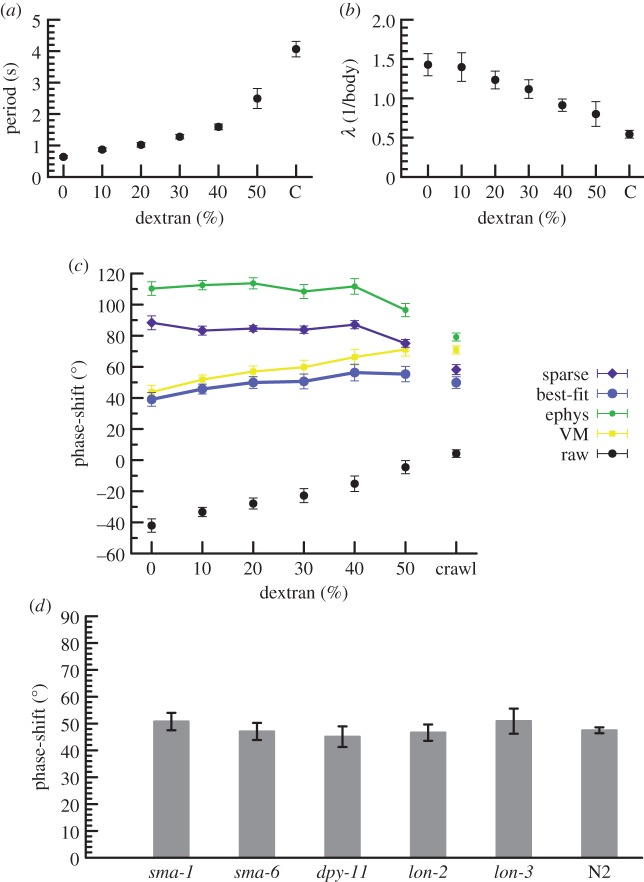Figure 4.
Locomotion parameters and muscle activity–body curvature phase-shifts. (a) Period of oscillation of animals crawling over an agarose gel (C) or swimming in solutions with different percentages of dextran to increase viscosity. Error bars, s.e.m. n ≥ 4 samples per data point. (b) Wavelength of body bends as a fraction of body length during sinusoidal movement. (c) Estimated phase-shift between peak curvature and peak muscle activation (positive indicates activation leading curvature), using corrections suggested from vulval muscle recordings (yellow squares), electrophysiology (green circles), best-fit of amplitude–period relationship (blue circles) or filtering with sparsity (low number of changes) constraint (purple diamonds). Black circles indicate uncorrected measurements. Error bars, s.e.m. (d) Estimated phase advance in various mutants during crawling using the best-fit method from (c).

